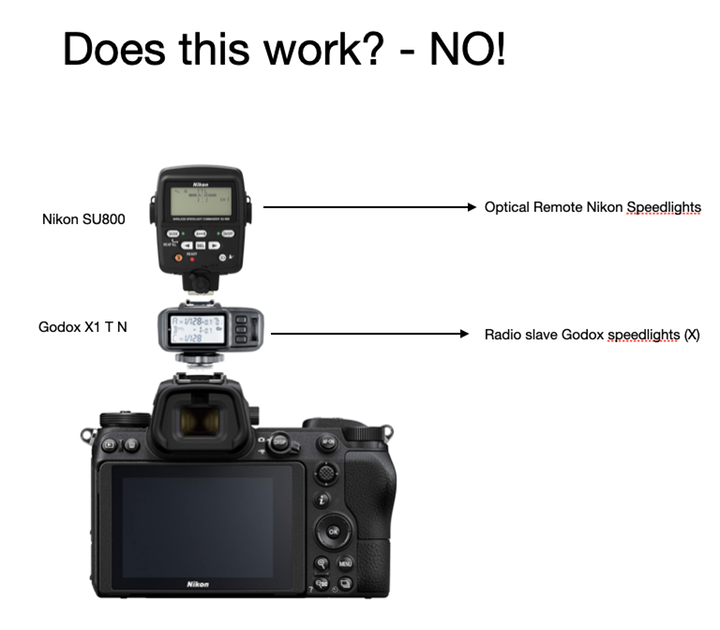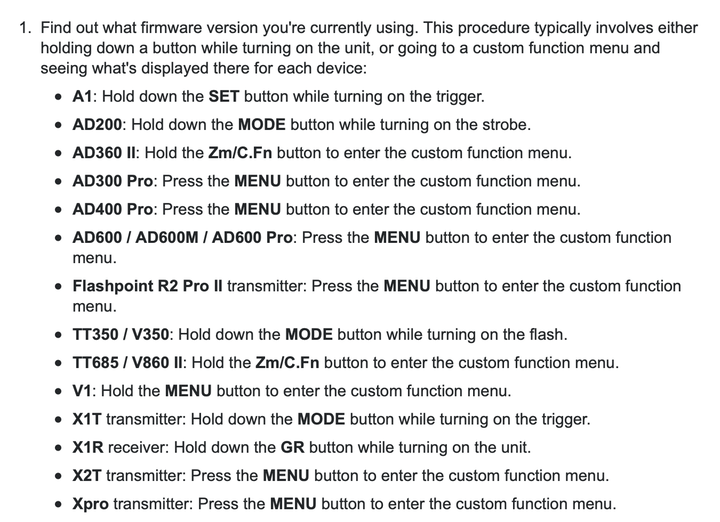GODOX offers a variety of affordable lighting products. I quite like them. Here is a review of my experience.
May 3, 2020
Notes on using Godox devices for multi-light portrait shoots.
Look for Folder: 2020_0502_Portrait Lighting - Godox. Also, for the images in the folder, you can see the flash settings by viewing them in ViewNX-i and checking the metadata. Also, look at the catchlights in the eyes for clues on the lighting set-up
The set-up was:
Shot with Nikon Z7 24-70mm f/2.8 set to approx 60mm. Also with Nikon 200mm f/2 (what a beast!)
XPro-N on-camera
Black, seamless backdrop
AD400 Pro with a 22” beauty dish, key light, off to the right and above the subject (Group A, TTL)
AD 200 with a 24” X 39” softbox, fill light, just left, off center, and slightly above camera (Group B, Manual)
I also replaced the Xpro-N with on-camera V1 set to Master mode as an on-camera fill alternative
Observations:
1. After some fiddling, I was able to make TTL work on the AD400 and manual mode work on the fill flash. Exposures seemed fine
2. By “fiddling”, I mean at first, I could not make the AD400 shoot in TTL despite it being set-up for that. Not sure of the problem but didn’t instill confidence
3. The V1 worked OK as a master. It was nice that you could turn off it’s flash as an option
4. When first powering on (camera then trigger then remote flashes) the remote flash didn’t automatically sync with the settings on the trigger. I needed to change the settings then the remote flash sync’d up. Again, not a confidence builder
5. It took a while, reading the manual and playing with the Xpro-N to be able to set it up with confidence. There are numerous redundant modes which can be confusing. best to keep it in remote trigger mode TTL or manual.
Next Step. I wanted to see if the Godox system would work with Nikon flashes. I set up the Z7 with the X1T-N trigger. Initially I configured this trigger with the same settings as the Xpro-N. Everything seemed to work the same. Strangely, if I changed the TTL settings (grp A)(ex. -1), these did not show up on the AD400 screen. However, the AD400 responded correctly to the settings change. Another confidence issue. If I changed the setting to Manual, then the AD400 showed the correct manual setting.
I then attached the X1R N to a Nikon SB910 and set it up to replace the AD200 - Group B, M 1/32.
The correct setting for the SB910 is to set it to TTL mode. If the trigger is set to manual, the flash will be manual. If it is set to TTL, then (I think) it will be TTL.
This all worked fine. I tried a variety of TTL and manual settings and the SB910 performed as expected, on its own as well as in conjunction with the AD400 Pro.
For the next test, I attached an SU-800 remote commander on to the hot shoe on top of the X1R-N thinking that the hotshoe was a “TTL passthrough”. The idea was to see if I could control both Godox flashes as well as Nikon flashes, each using it’s own trigger. Unfortunately this doesn’t work. The TTL passthrough does not function in that mode. So no luck.

I then tried attaching an SB910 directly on to the hotshoe of the X1R-N. Rumor has it that it configures the SB910 into a slave, group A
https://www.dpreview.com/forums/thread/4131567
The flash triggered in TTL mode. It looked like it was stuck in TTL mode no matter what setting I put into the X1T-N. Basically, this hotshoe is useless for all practical purposes.
Observations:
Godox are doing a fine job of providing lighting solutions all the way from speedlights to studio strobes. However, you can see why Godox may not be the ideal choice for professional applications since things don’t always work as expected (see above). For me, this is OK because my use is not “mission critical”. While not very elegant, Godox does offer a hybrid set-up of both Godox and Nikon flashes. In order to use Nikon flashes you need an X1R-N for each flash. I guess this could be OK but would only do this if I really needed this kind of hybrid set-up where I need studio lighting and multiple speedlights, mixed. However, I’ll continue to use their products in studio (portrait lighting) situations. it will be interesting to compare the experience with the Profoto products.
April 22, 2020
Godox has a variety of lights from on-camera flash to studio lighting using radio wireless remotes. There is also the possibility of mixing Godox and optical slaves such as Nikon speedlights. This needs to be verified.
To date, here is the line-up:



Firmware versions:
https://photo.stackexchange.com/questions/98899/how-do-i-tell-if-my-godox-trigger-or-flash-needs-a-firmware-update

The current firmware versions are (4/22/20):
V1-N V1.2
AD200 V2.2
AD400 Pro V1.2
X1-TN V24
X1-RN V21
X ProN V1.6
Note: Upgrading the firmware on these devices is a major pain in the ass. Here are some tips:
1. Do it on a (real) PC
2. You may need to go through a process to enable insigned drivers. Do this if the PC does not “see” the device.
3. Make sure you remove batteries before updating
4. Godox is sold by Adorama under the Brand Flashpoint. Their website has the best gudance:
https://www.adorama.com/g/flashpoint-firmware-updates
Botton line. Firmware updating is a major negative against GODOX. It will be interesting to compare this process with Profoto.
First, the speedlight . .
GODOX V1

The Godox V1 is an interesting speedlight. It has a round light opening versus the more conventional rectangular opening. This is claimed to give a more "soft” light even without a modifier. In addition, the speedlight comes with a variety of accessories which can be used to modify the light spread. They can be attached magnetically which is easy and convenient. The modifiers consist of:
Diffusion Dome
Bounce card
Grid
Wide angle diffuser
Small snoot
Variety of filters
These modifiers can be used in combination (ex. Dome + bounce)

There is also a remote trigger available - GODOX X-Pro. I used the Nikon version. This allows for off-camera control + control over multiple speedlights.

I tested the V1 with the usual test (see here).
Here are the results:

Here you notice there is not so much change in GN as the zoom is changed. The only speculation I have is that the nature of the round head on the V1 makes the light beam less sensitive to zoom factor. Whatever the explanation, handy to know this characterisitc. Notice, however, that the measured results are much closer to the V1 Spec (measured GN = 26@50mm versus 28) and is the same as the SB5000.
I also tested the available light output at different tilt angles and with various modifiers. Here are the results I measured:



I have data for other modifiers but they aren’t very interesting. Here’s a summary:
1.At 0deg. angle, the grid loses 1-stop
2. The wide angle diffuser loses about 1/2-stop
3. The snoot loses about 1-stop
Conclusions from these tests are:
1. Without a modifier, tilting the head up vertically (with a 10ft high ceiling) loses 4 stops of available light on the main subject.
2. However, adding the bounce card and tilting vertically, only degrades by 3 stops since some of the vertical light is bounced forward.
3. With the dome added, there is no difference in light loss when tilted vertically between the dome and no modifier.
4. With the dome added, at 0deg tilt, there is a 1-stop difference to no modifier
Auto Zoom:
If the flash is in any other position than 90 degrees, it reverts to manual.
If the flash is not mounted to the camera, it reverts to manual.